Polaroid Sheets

PIRA: 6H10.11
Overview:
When unpolarized light encounters a polarized plastic sheet, only waves vibrating in a specific direction are allowed to pass through. This occurs because the sheet contains long chains of polymer molecules that are stretched and aligned in one direction. These molecules act like a microscopic grating, absorbing or reflecting light waves that vibrate parallel to their alignment, while allowing those vibrating perpendicular to pass through. This process, known as polarization by absorption, effectively filters the light, producing a beam that vibrates in a single plane.
Materials:
Projector, three Polaroid sheets, Polaroids sheet stand, a short and tall wood block.
Setup:
Place projector and on top of the smaller wood box and plug it in. Aim the projector at one of the projector screens in the classroom. Place the stand for the polaroid on the larger wooden box. Turn on the projector without any of the polaroid sheet placed within the stand. This works best with the lights off, but can be done in low lighting if needed.
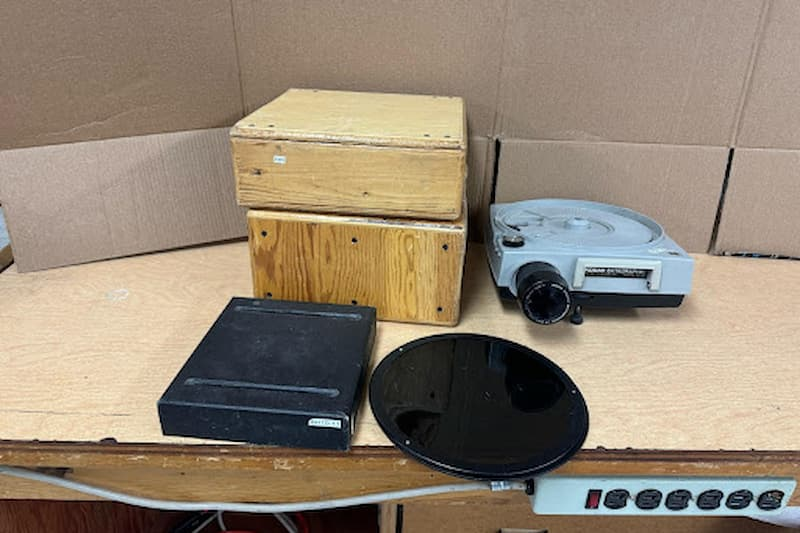
How to:
Turn on the projector. Next place one of the polaroid filters onto the stand and let the light from the projector pass through it (will lose half it’s luminosity). Next add the second filter aligned with the first filter to pass the maximum amount of light to pass through the filter (again half the luminosity will be lost), slowly rotate either of the filter until all the light is blocked out (filters are at 90° to each other).
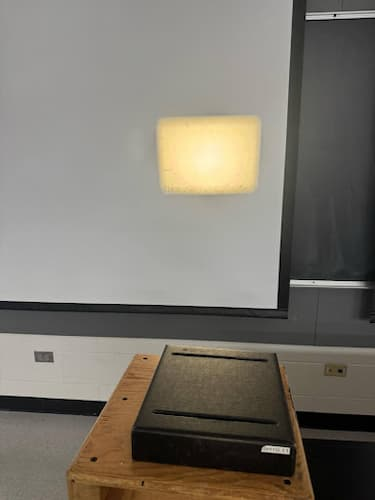
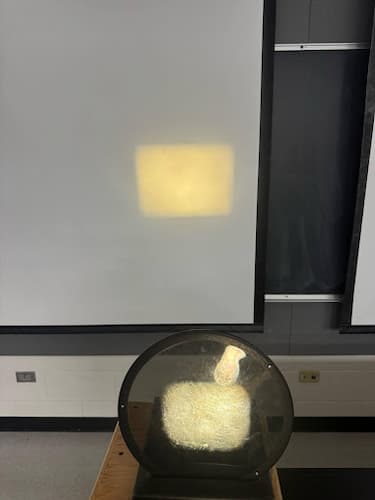
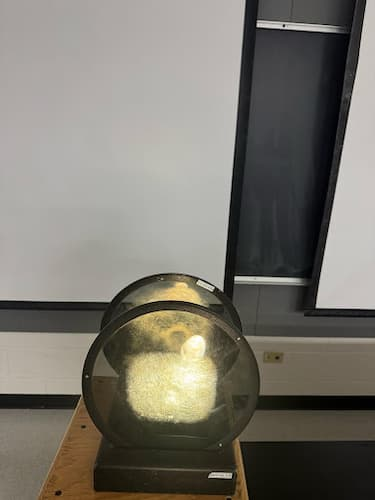
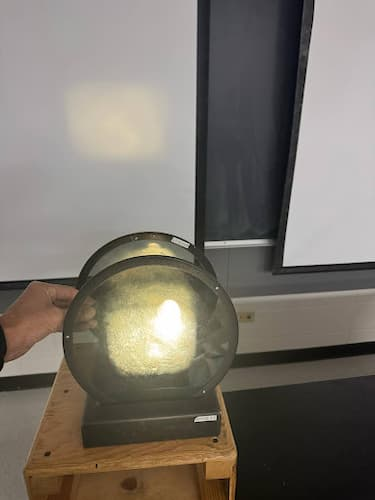
Ask the audience, “What would happen if I put another polarized sheet between these two filters?” After you get an answer, test their theory and show them that light will pass through if the filter is not aligned with the other two filters (the maximum amount of light that is allowed to pass through the filters is at 45° difference from the other two filters.
Safety:
There are no safety issues with this demo.
